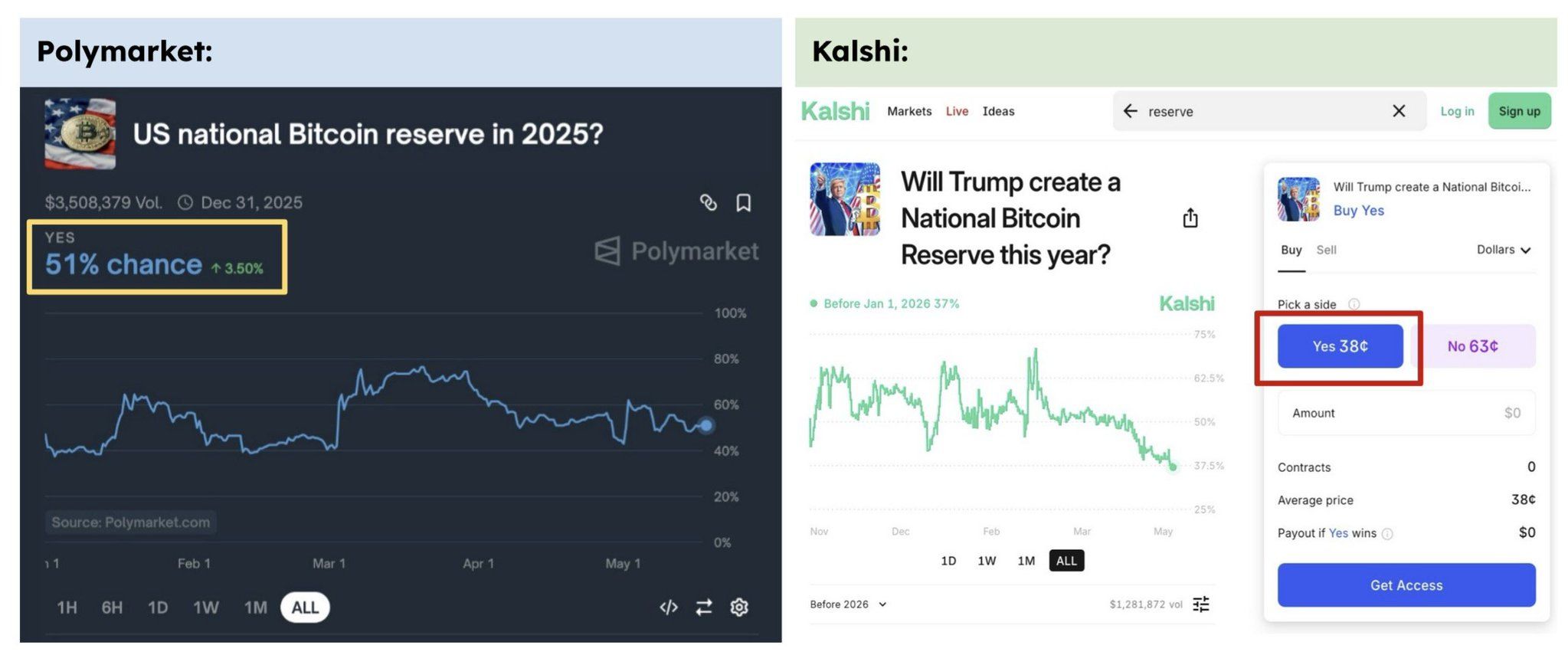Prediction Markets Cannot Agree on the Truth

Polymarket and Kalshi both offer prediction markets around a U.S. National Bitcoin Reserve in 2025, with seemingly similar questions. However, their specific resolution criteria differ significantly, creating a mirage of arbitrage when traders try to exploit the price gap between the two markets.
Key Ideas
-
Superficial similarity hides divergent rulebooks: Polymarket resolves based on broader criteria—any BTC held by the U.S. government and verified through multiple credible sources—while Kalshi requires explicit confirmation from the White House or The New York Times and a formal designation of a “National Bitcoin Reserve.” Because of these differences in asset definition, evidence standards, and timing, the same real-world event can yield opposing outcomes across platforms.
-
Prediction markets are built around oracles, not just odds: Each market’s rules define a unique and non-fungible financial product. The trust model—who decides what’s true—is as important as liquidity or UI. This means that unlike typical trading venues, prediction markets fragment along ideological and epistemological lines, making oracles not just technical mechanisms but brands that traders cluster around based on trust and worldview.
Read more at: blog.monad.xyz
2025-05-25